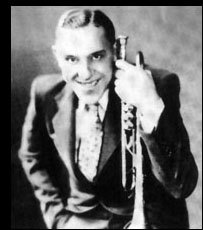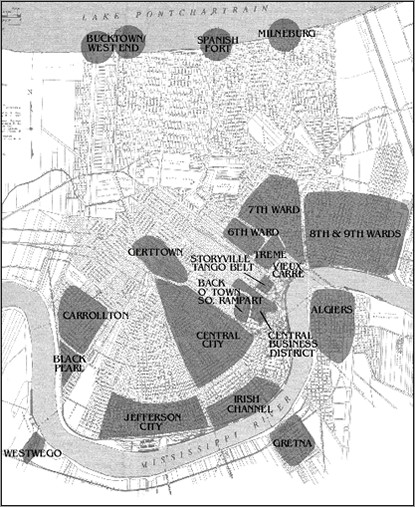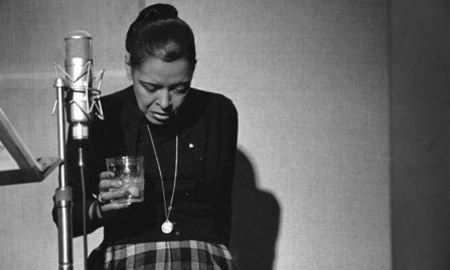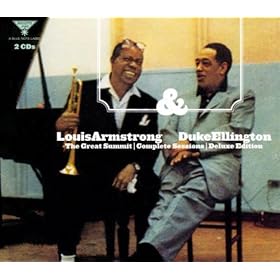I just made an awesome dinner that involved cooking some beef in some slop on the stove with a bunch of other things for an hour. I just had a look and found a bunch of tiny beetles floating in it. Who knows where they came from, but I’m suspecting a grotty unsealed bag of paprika. What was I thinking.
I picked out all the bugs.
Should I start again from scratch? They’re tiny bugs. But there are a lot of them. I think I got them all.
Ten years ago, when I had a crazy Brisbane organic herb garden, I used to just make sure I chopped the herbs really small so the inevitable bugs and caterpillars were smashed beyond recognition. But today I’m not so cool about bugs. All those years in Melbourne, land of no-bugs, has made me weak. Weak and squeamish.
….
I think we might eat it anyway. The Squeeze, king of picky eating, has declared it safe. But then, it’s big pieces of food he’s particular about. And these bugs are real small.
ina ray hutton and her melodears
I’m currently in love with this song, ‘Truckin” (though I prefer the Henry Red Allen version I have), and Ina Ray Hutton and her Melodears has been on my mind… what with their’s being an all-girl swing band.
Teh orsum:
i can’t believe i’m posting this
But who the fuck cares about muffin tops, and also, what the fuck IS a muffin top?
This is the sort of fucked up shit I hate about the internet, women’s magazines and what I remember of high school (I’m trying to contract pattern-amnesia). JESUS CHRIST, sisters, just put on your goddamn clothes and get on your goddamn bike and FEEL THE ENDORPHINES! Then you don’t give one motherfucking shit about whether you’re… what? Alive? Having flesh upon your bones? Bringin’ the bounty, as what badass feministahs do?
The more time you spend worrying about whether or not you’re looking just some imaginary man would like you to look (or, more likely, looking the way some other woman with Issues is telling you you should look), the less time you can spend planning your next bike ride/website redesign/photography outing/sewing binge/crocheting craze/cooking fest/jazz routine/DJ set! I mean, come on – there aren’t really that many hours in the day – prioritise, people!
I can’t believe I followed that link. I can’t believe I read it! It’s a good thing there’re lolcats in the world.

Shoulda posted this earlier, I guess.
no, not the dentist
Yes, the dentist. Again.
I went in for a quick inspection today, and while I was fine all day, fine in the waiting room, I started to tremble in the chair. My heart was pumping so hard I was getting funny vision. I was sweating and teary and desperately wanted to bawl.
Dentist’s verdict: one small cavity to fix up next week. Root canal site of 2007: fine. Otherwise: nice mouth.
Still, I came out of there shaking and feeling faint and wanting to cry.
Goddamn that root canal of 2007. GodDAMN it.
wingy manone

I’ve been downloading a bunch of Wingy Manone from emusic’s Chron Classics/Complete Jazz collection. I thought I could keep away from him, but I can’t. He played the trumpet in bands with all sorts of people in New Orleans, Chicago and New York.
This Redhotjazz.com entry states:
Wingy Manone was a New Orleans trumpet player and vocalist who lost his right arm in a streetcar accident when he was ten years old. He wore a prosthetic arm while on stage performing and used it so well that many never noticed his disability.
Makes me wonder if they realise that it’s not a disability if it’s not impairing his abilities…
map of new orleans jazz neighbourhoods

This will make a lot more sense if you read more about it over here at the National Parks Service site. Yes, jazz + parks. It’s a strange American thing. Remind me to post about the Century Ballroom and its interesting relationship with the NPS.
If you’re digging on these maps, make sure you also check out the Louisiana maps, especially the historic ones.
I have been trying to ‘tour’ New Orleans via googleearth, but can’t quite figure it out. Will report back.
Can I add: MAPS! SKWEEE!
the trouble with linear jazz narratives + more
In the earliest parts of my researching into jazz history, I tried to set up a sort of ‘time line’ or map* of musicians and cities and bands. Who played with which band in what city at what time? Then where did they go? This approach was partly based on the idea that particularly influential musicians (like Armstrong) would spread influence, from New Orleans to New York and beyond.
But drawing these time lines out on pieces of paper, I found it wasn’t possible to draw a nice, clear line from New Orleans to New York, passing through particular bands. Musicians left New Orleans, went to New York, then back to New Orleans, then off to France, then back again to New York. The discographies revealed the fact that a band recorded in different cities during the year – they were in constant motion, all over America. Furthermore, musicians didn’t stick with one band, they moved between bands, they regularly used pseudonyms and even the term ‘band’ is problematic. The Mills Blue Rhythm Band, with its dozens and dozens of names, was in fact a shifting, changing association of musicians, and did not even have a fixed ‘core’ set of players. Perhaps this is why the MBRB is so important: many people played with them, and they were a band(s) which moved and changed shape, a loose network of musicians who really only existed as ‘a band’ when they were caught, in one moment, on a recording. Or perhaps on a stage (though that’s far more problematic). I wonder if that’s why it’s so hard to find a photo of them? Perhaps the ‘Mills Blue Rhythm Band’, as a discrete entity didn’t really exist?
The more I read about jazz and ‘jazz’ history, the more convinced I am by the idea of ‘jazz’ as a shifting series of relationships. I think about cities not as fixed locations, but as points on a sort of ‘trade route’ or even as a complicated web or network of relationships between individual musicians (which is, incidentally, how I think about international swing dance culture – the physical place is important, but it’s not binding).
Right now I’ve followed some references backwards to an article by Scott DeVeaux called Constructing the Jazz Tradition, which is really interesting. It not only outlines some of the political effects of a coherent ‘narrative’ history of jazz, but also the economic and social effects of positioning jazz as a ‘black music’, with interesting references to consequences of the ‘jazz musician as artist’ for black musicians. Read in concert with David Ake’s discussion of creole identity and ethnicity in New Orleans as far more complicated than ‘black’ and ‘white’, this makes for some pretty powerful thinking.

I’m very interested in the idea of a ‘jazz canon’ and of the role of people like Wynton Marsalis, the Ken Burns Jazz discography, jazz clubs and magazines developing during the 30s and 40s devoted to New Orleans recreationism and the whole ‘moldy figs’ discussion. The tensions surrounding the Newport jazz festival also feed into this: the Gennari article (which I discuss in reference to its descriptions of white, middle class men rioting at Newport here) pointed out the significance of a festival program loaded with ‘trad’ jazz – for black musicians and for the popularising of jazz generally. I’ve also been reading about the effects of this emphasis on trad jazz for superstar musicians like Louis Armstrong.
O’Meally and Gabbard have written about the way Armstrong’s public, visual persona is marked by ethnicity.

Armstrong was known for his visual ‘mugging’, or playing the ‘Uncle Tom‘ for white audiences, particularly on stage. Eschen writes
…as the struggle for equality accelerated, Armstrong was widely criticized as an Uncle Tom and, for many, compared unfavourably with a younger, more militant group of jazz musicians (193)
This, as Eschen continues, despite the fact that Armstrong was actually an active campaigner for civil rights in America, and overseas.
The trad jazz movement – or ‘moldy figs’ pushing for the preservation of an ‘authentic’ jazz from New Orleans – effectively pushes Armstrong to continue as Uncle Tom – unthreatening black man clowning for white audiences. A narrative history of jazz which emphasises a beginning in New Orleans and a consistent, clearly defined lineage of musicians and styles also, more subtly, relies on an idea of the black musician as powerless or unthreatening. DeVeaux makes the point that positioning jazz (and jazz musicians) as artistic loners who do not ‘sell out’ with commercial success:
Issues of ethnicity and economics define jazz as an oppositional discourse: the music of an oppressed minority culture, tainted by its association with commercial entertainment in a society that reserves its greatest respect for art that is carefully removed from daily life (530)
In this world, the ‘true’ jazz musician is ‘black’ (in a truly singular, homogenous sense of the world), he is poor and he is mugging for white audiences.

Billie Holiday becomes a particularly attractive representation for this idea of the ‘jazz musician’: poor, black, addled by drugs and alcohol, a history of prostitution, yet nonetheless, a creative genius pouring out, untainted in recording sessions (and I’m reminded of the ‘one take’ stories) and tragically cut short.
All of this is quite disturbing for someone who really, really likes jazz from the 20s, 30s and 40s. Am I buying into this disturbing jazz mythology? It’s even more disturbing for someone who found similar themes in contemporary swing dancers’ development of ‘narratives’ and geneologies of jazz dance history. As DeVeaux writes (about jazz, not dance), though, this is
The struggle is over possession of that history, and the legitimacy that it confers. More precisely, the struggle is over the act of definition that is presumed to lie at the history’s core (528)
I wonder if I should suspect my own critique of capitalist impulses in contemporary swing dance discourse?

I don’t think it’s that simple. Gabbard discusses Armstrong’s work with Duke Ellington, including the filming of the 1961 film Paris Blues (in which Armstrong starred, and for which Ellington contributed the score) and the recording of the ‘Summit’ sessions:
…at those moments in the film when he seems most eager to please with his vocal performances, his mugging is sufficiently exaggerated to suggest and ulterior motive. Lester Bowie has suggested that Armstrong is essentially “slipping a little poison into the coffee of those who think they are watching a harmless darkie”.Throughout his career in films, Armstrong continued to subvert received notions of African American identity, signifying on the camera while creating a style of trumpet performance that was virile, erotic, dramatic, and playful. No other black entertainer of Armstrong’s generation “with the possible exception of Ellington” brought so much intensity and charisma to his performances. But because Armstrong did not change his masculine presentation after the 1920s, many of his gestures became obsolete and lost their revolutionary edge. For many black and white Americans in the 1950s and 1960s, he was an embarrassment. In the early days of the twenty-first century, when Armstrong is regularly cast as a heroicized figure in the increasingly heroicising narrative of jazz history, we should remember that he was regularly asked to play the buffoon when he appeared on films and television (Gabbard 298)
You can see a clip from Paris Blues here.
Armstrong’s performance gains meaning from its context, from the point of view of the observer, from his own actions as a ‘real’ person (Armstrong was in fact openly, assertively critical of Jim Crowism and quite politically active) and from its position within a broader ‘body’ of Armstrong’s work as a public performer. Pinning it down is difficult – it’s slippery.
The idea of layers of meaning is not only interesting, it’s essential. This physical performance of identity, tied to the physicality of playing an instrument reminds me of the layers of meaning in black dance. And of course, of hot and cool in dance, and the layers of meaning in blues dance and music. Put simply, what you see at first glance, is not all that you are getting. Layers of meaning are available to the experienced, inquiring eye. Hiding ‘true’ meanings (or more subversive subtexts) is important when the body under inspection is singing or dancing from the margins. Tommy DeFrantz discusses meaning and masculinity in black dance during slavery:
serious dancing went underground, and dances which carried significant aesthetic information became disguised or hidden from public view. For white audiences, the black man’s dancing body came to carry only the information on its surface (DeFrantz 107).
Armstrong’s performance is more than simply its surface. As with any clown, the meanings are more complex than a little light entertainment. Gabbard continues his point:
In short, Ellington plays the dignified leader and Armstrong plays the trickster. Armstrong’s tricksterisms were an essential part of his performance persona. On one level, Armstrong’s grinning, mugging, and exaggerated body language made him a much more congenial presence, especially to racist audiences who might otherwise have found so confident a performer to be disturbing, to say the least. When Armstrong put his trumpet to his lips, however, he was all business. The servile gestures disappeared as he held his trumpet erect and flaunted his virtuosity, power, and imagination (Gabbard 298).
This, of course, reminds me of that solo in High Society that I mentioned in a previous post. There’s some literature discussing the physicality of jazz musician’s performances, but I haven’t gotten to that yet (though you know I’m busting for it). I have read some bits and pieces about gender and performance on stage (especially in reference to Lester Young), and there’re some interesting bits and pieces about trumpets and their semiotic weight, but I haven’t gotten to that yet, either.
Sorry to end this so abruptly: these are really just ideas in process. :D
To sum all that up:
- The idea of a jazz musician as ‘isolated artist’ is problematic, especially in the context of ethnicity and class. Basically, the ‘true jazz musician who doesn’t sell out by making money’ is bad news for black musicians: it perpetuates marginalisation, not only economically, but also discursively, by devaluing the contributions of black musicians who are interested in making a living from their music. Jazz musicians are also members of communities.
- Linear histories of jazz are problematic: they deny the diversity of jazz today, and its past. Linear histories with their roots in New Orleans, insisting that this is ‘black music’ overlook the ethnic diversity of New Orleans in that moment: two categories of ‘black’ and ‘white’ do not recognise the diversity of Creole musicality, of the wide range of migrant musicians, of the diversity within a ‘white’ culture (which is also Italian and English and American and French and….), of economic and class relations in the city, and so on.
- ‘linear histories’ + ‘musician as artist’ neglect the complexities of everyday life within communities, and the role that music plays therein. These myths also overlook the fact that music is not divorced from everyday life; it is part of a continuum of creative production (to paraphrase LeeEllen Friedland and to refer to discussions about Ralph Ellison – which I will talk about later on).
- Music and dance have a lot in common. They carry layers of meaning, and aren’t simply discrete canvases revealing one, singular meaning to each reader. They are weighted down by, buoyed up by a plethora of ideas and themes and creative industrial practices and sparks.
References
DeFrantz, Thomas. “The Black Male Body in Concert Dance.” Moving Words: Re- Writing Dance. Ed. Gay Morris. London and New York: Routledge, 1996. 107 – 20.
DeVeaux, Scott, “Constructing the Jazz Tradition: Jazz Historiography†Black American Literature Forum 25.3 (1991): 525-560.
Eschen, Penny M. “The real ambassadors”. Uptown Conversation: the new Jazz studies, ed. Robert O’Meally, Brent Hayes Edwards, Farah Jasmin Griffin. Columbia U Press, NY: 2004. 189-203.
Friedland, LeeEllen. “Social Commentary in African-American Movement Performance.”
Human Action Signs in Cultural Context: The Visible and the Invisible in
Movement and Dance. Ed. Brenda Farnell. London: Scarecrow Press, 1995. 136 –
57.
Gabbard, Krin. “Paris Blues: Ellington, Armstrong, and Saying It with Music”. Uptown Conversation: the new Jazz studies, ed. Robert O’Meally, Brent Hayes Edwards, Farah Jasmin Griffin. Columbia U Press, NY: 2004. 297-311.
Gennari, John. “Hipsters, Bluebloods, Rebels, and Hooligans: the Cultural Politics of the Newport Jazz Festival.” Uptown Conversation: the new Jazz studies, ed. Robert O’Meally, Brent Hayes Edwards, Farah Jasmin Griffin. Columbia U Press, NY: 2004. 126-149.
Lipsitz, George. “Songs of the Unsung: The Darby Hicks History of Jazz,”Uptown Conversation: the new Jazz studies, ed. Robert O’Meally, Brent Hayes Edwards, Farah Jasmin Griffin. Columbia U Press, NY: 2004: 9-26.
O’Meally, Robert G. “Checking our Balances: Louis Armstrong, Ralph Ellison and Betty Boop”. Uptown Conversation: the new Jazz studies, ed. Robert O’Meally, Brent Hayes Edwards, Farah Jasmin Griffin. Columbia U Press, NY: 2004.
276-296. (You can see the animated Betty Boop/Armstrong film O’Meally references here.
*The jazz map was found via jazz.com, but they don’t list the url for the map in context.
There’s something seriously addictive about historic ‘jazz maps’. I think it’s because they’re imaginary places. My latest find: New Orleans ‘jazz neighbourhoods’.
Marty Grosz and his Honoris Causa Jazz Band, Hooray for Bix!

Marty Grosz and his Honoris Causa Jazz Band, Hooray for Bix! Despite the scary album cover (this was released in 1957), there’s some nice stuff on this album. I’m getting a bit tired of New Orleans revival bands (especially the ones from the 50s and later), but Marty Grosz is a guitarist, and this is reflected in the music – there’s a little less emphasis on the brass. Well, comparatively speaking. I’m still not liking the shuffle rhythm from the drummer on some tracks (it’s just NOT RIGHT for NO stuff), but there are a couple of songs I really quite like and will play for dancers. In an ideal world I’d stick to the originals, but some of those originals are really scratchy.
In an interesting turn of events, emusic is now releasing the Chronological Classics albums as well as the ‘Complete Jazz Series’ albums, though they seem to be the same albums. I’m not sure whether there’s a sound quality difference, but even CC wasn’t perfect sound quality – it’s more for people who’re looking to collect everything from an artist during a particular year. Which you can do with these series.
recent emusic adventures
My emusic account ticks over on the 19th, and I’ve managed to hang onto some of my downloads til today… and there are still some left! It’s too easy to use them up, though, especially when you’re an ob-con tempted with the option of ‘going complete’ with an achievable artist… such as Jimmie Noone or the McKinney’s Cotton Pickers. But I find I really can’t absorb much more than my download limit per month. Well, not if I also want to keep listening to my existing collection and knowing it well enough to DJ with any sort of competence.
But this is what I’ve downloaded recently:

Lavern Baker Sings Bessie Smith. Just a few songs. I had a couple of tracks from this already from compilations, but I noticed it’d been added to emusic lately (that ‘music you might like’ thingy is very convincing) and figured I’d download a few things. Namely ‘Gimme a Pigfoot’. I’ve just come across a really slinky Billie Holiday version and thought I’d like the Baker one. And I do. She’s no Bessie Smith, but she don’t suck. There are moments, though, when I wish Baker’d follow through on her big, arse-kicking intros; she tends to back off a bit a few bars in. Bessie wouldn’t.

Duke Ellington and His Famous Orchestra 1941: The Complete Standard Transcriptions. Just a couple from here, but versions I didn’t have. I’ve really enjoyed a few tracks from the Bob Crosby album in this series, and thought I’d give these a punt. Nice. No surprises, but slightly better quality than some versions of these I already have, and ‘John Hardy’ is a bit quicker (and snappier) than the one I had. Transcripts are interesting because they were recorded for the radio, some of them live. Digging through the discographies has made me realise just how important broadcast radio was to jazz and to music in the early days. Live broadcasts were de rigeur, and important to musicians’ careers.
Jimmie Noone, Wingy Manone, Doc Cook and His 14 Doctors Of Syncopation, Andy Kirk and other scratchies. Mostly obsessing over these doods.
But I can never go past a little hifi or good quality saucy blues.

Big Mama Thornton’s ‘Ball n Chain’. Just the song ‘Gimme a Penny’. Because that’s all you need, really. Well, that and ‘Hound Dog’, because some skinny-arse white boy ain’t got nothin’ on this sister.
The Bluesville Years Volume 11: Blues Is A Heart’s Sorrow (you don’t need a photo for this one). I’ve downloaded various bits and pieces in this series. The quality is fab. The artists are amazing. The songs are super, excellently saucy. Not at all G-rated.
There are lots more, but this is the sort of thing I’m enjoying at the moment. Gotta go eat pizza now. :D
some things about djing that other DJs’ve taught me
Here are the most useful things I’ve learnt about DJing, from other DJs:
1. Begin as you mean to go on. Russell from Canberra used that line, and it’s useful. If I don’t want the tempos to be too low during the set, I try to make my first song the slowest I’ll go during that set. No lower. From there, the only way is up.
2. Come in loud and proud – get that party started. Andy from Melbourne taught me the most useful tip for DJing blues I’ve ever learnt. He plays a loud, spankin’ blues set – no quiet kissing and cuddling. I once heard him start a set in the back room at a late night at MLX by yelling “let’s get this party started!” and playing some loud, chunky hippity hop. Only Andy could get away with that shit – his energy and enthusiasm is infectious.
3. Be really into the music you’re playing.
Trev from Perth is a big, fat music nerd. He loves the music he plays. Sometimes I find myself getting frustrated with DJing for dancers because I’m not happy with the music I’m playing. I feel like I’m playing stuff I don’t really like as a way of compromising between what I do like and what I think they like. But Trev doesn’t seem to compromise – he plays what he likes. What he loves. I find that I do a better set and have a much better time DJing when I play music I love, and when I (consequently) really get into the feel of dancing. I figure, if it’s good music, people will dance despite themselves. And as DJs, we’re really doing this as a community service (as well as as a chance to show off), so why not buy and play music we like?
